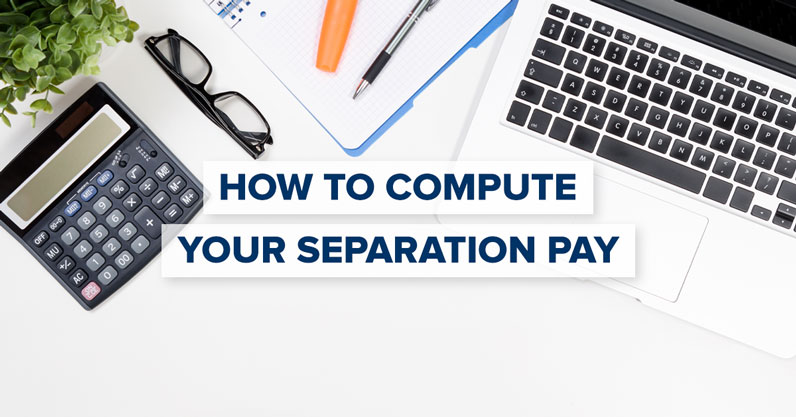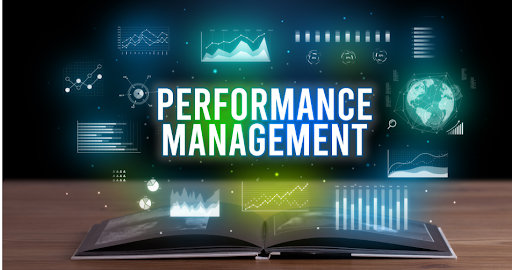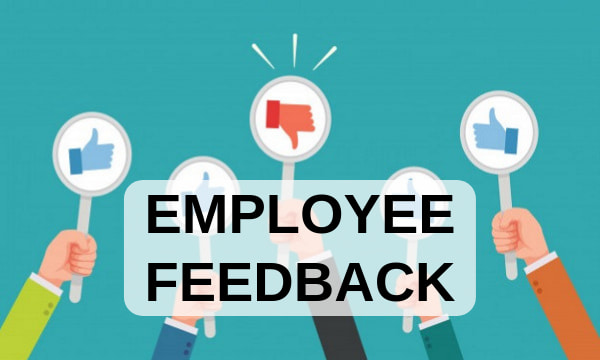Employee feedback is defined as a process of giving constructive suggestions to the employees by their reporting managers, supervisors and peers. Note though that it is a two-way process wherein employee feedback also comprises of the feedback that the employee would want to give to his/her manager, peers or the organization as a whole.
Studies show that companies that promotes an open and transparent feedback culture, where people are comfortable asking for and receiving feedback from their colleagues and managers, can really change how a workplace operates.
But too often feedback is something that happens only once a year, during annual reviews or appraisals. Some companies conduct semi-annual or quarterly performance reviews. What is important is to have a regular and timely employee feedback and performance review mechanism in place to ensure that engage your employees and create motivated and high-performing teams.
According to an article published in Forbes, 73% of employees consider feedback important but only one third receive it. Most managers don’t provide enough feedback and when they do they tend to make it negative or too vague and the importance of feedback is lost.
IMPORTANCE OF EMPLOYEE FEEDBACK
It provoked change and drives growth
Feedback gives people an opportunity to look at themselves in a different light. It helps them see how others perceive them, and the impact that their behavioural style and ways of working has on others in the team. This can be particularly insightful for leaders, as it helps them to see how they may be better able to engender trust and inspire a better performance from their team. What’s more, most people naturally want to succeed in their work, and as a result are often very receptive to constructive feedback. According to Harvard Business Review, 72% of people feel their performance would improve if their managers provided corrective feedback. In fact, the same survey found that 57% of employees prefer corrective feedback to purely praise and recognition.
It gives people a sense of purpose
As humans, we all want to feel like we belong and are appreciated. In a work context, this means feeling like there is value to what we do and what we bring to the business, and knowing that we are part of a wider team all working towards the same goals.
This knowledge that we are useful and valued gives us a sense of purpose. It shows us that there is meaning to what we do. This is what gets people to show up every day and deliver their best. Giving regular feedback is one way we can show employees that they are valued and useful. Even negative feedback can spur people on to want to do better. Any feedback, good or bad, will reinforce to your employees that there is a point to what they are doing.
It improves employee engagement
A study of Officevibe shows that 4 in 10 workers are actively disengaged when they receive little or no feedback. The research also highlighted how important it is for employees to receive regular feedback. 43% of highly engaged employees receive feedback at least once a week compared to only 18% of employees with low engagement.
Even if they don’t vocalise it, employees crave feedback. And with the ambitious and growth-driven younger generations of Millennials and Gen Y now making up a significant proportion of the workforce, feedback is only going to become more focal for companies.
It helps improve working relationships
Peer-to-peer feedback opens up the communication channels between employees. This can be particularly useful if there is conflict or tension between colleagues. Giving feedback is an opportunity to get things out in the open so that issues can be resolved and they can find ways to work together better. Moreover, regular feedback can prevent conflict from happening in the first place. Small issues can be resolved before they have a chance to escalate into something bigger.
It helps in the Employees Professional development
The more an employee becomes comfortable asking/giving feedback the more they will take this up as their own initiative. This will lead to a more organized professional development.
TYPES OF EMPLOYEE FEEDBACK
There are many types of employee feedback like 360-degree employee review, continuous feedback mechanism, employee performance evaluation to name a few.
1. 360-degree feedback – It is a process in which an employee receives feedback from his/her superiors, manager, peers to identify the strengths and weaknesses of an employee so that immediate corrective measures can be taken to improve employee performance.
The purpose of a 360-degree feedback is to understand an employee’s performance and collect feedback and reviews, this mechanism of employee feedback allows a multi-pointer rating and serves as a benchmark for an employee’s development plan.
However, in a 360-degree feedback is it essential that feedback remains anonymous. The purpose of this anonymity is to keep it strictly professional, so it doesn’t lead to any differences between the employee receiving the feedback and the manager or peer giving the feedback.
2. Continuous feedback mechanism – This is a process where an employee receives feedback on a timely basis. Imagine an organization where employees are willing to get a feedback but managers are not willing to spend any time to give the needed feedback. No points for guessing, the lowered levels of employee motivation that it would bring.
There are a number of benefits of continuous feedback- it promotes a healthy workplace culture, helps employees and organization set better goals, boosts employee morale and this, in turn, leads to happy employees. However, continuous feedback is a complex process and should be done carefully.
The process should not be scary for employees, a feedback doesn’t have to negative, it needs to be constructive. No organization would want to promote a culture where employees don’t trust the leadership and vice versa. This is not a process where you will blame the employees for why they have not achieved their targets, this is a process to help employees improve themselves through constructive feedback.
3. Employee performance evaluation – It is a formal method of providing feedback to the employee’s performance based on their work and result based on their job responsibilities. It is used to measure the amount of value added by an employee in terms of organization growth, revenue generated and overall return on investment (ROI)
Any organization that has learned the art of winning from within, understand the importance of feedback. They rely on a systematic performance evaluation process and grade employees annually based on the feedback received from their managers.
Ideally, employees are graded, with a promotion or increase in the increment received and similar methods. Performance evaluation also plays a vital role in providing periodic feedback to employees to make them more self-aware in regards to their own performance metrics.
Source: QuestionPro Article
EMPLOYEE ENGAGEMENT SOFTWARE
With the right clarity and use , Companies can now utilise AI and Digital tools to take the pulse on employee feedback as well as employee sentiment. Further, it can help in identification of factors that have the biggest positive and negative impact on your organization.
Company’s can collect the data with such tools. This can possibly empower organizations with insights to adjust and update their policies for creating a more engaged workforce. Hence, a single tool that can help unify workforces is essential for organisations to easily uplift their employees and work culture. In fact, it is best this way to inculcate the importance of employee engagement in the easiest possible manner.
Employee engagement software helps employees and managers to gauge, in real time, how everyone really feels. Most platforms have the ability to conduct surveys, provide feedback, offer support and encouragement to co-workers, and coach new hires as they develop.
IMPORTANCE OF AN EMPLOYEE ENGAGEMENT PLATFORM
1. Ensure emotional well-being of the entire organisation
When your employees are mentally and emotionally healthy they are able to deliver better, faster results.
An employee engagement software lets you check the pulse of your organisation on a regular basis. You can do it efficiently with pulse survey.
2. Give your employees a casual, democratic atmosphere
An employee engagement software allows you to collect relevant data about what lightens the mood of your employees.
This helps in avoiding the “monkey effect” and providing opportunities for thoughtful discussions about decisions for the company.
3. Recognize employee efforts just at the right time
Sherly Sandberg, as the vice president of Google made a mistake, that cost Google several million dollars.
When she confessed the mistake to the co-founder, Larry Page, his response to it was — “I’m so glad you made this mistake,” he said. “Because I want to run a company where we are moving too quickly and doing too much. Not being too cautious and doing too little. If we don’t have any of these mistakes, we’re just not taking enough risk.”
Employee appreciation leads to a culture which is fearless and which encourages people to take more risks, as it better to take risks and fail than to stay stagnant and not take risks.
To foster meaningful and tranquil environment words of appreciation take an employee and the work environment long way.
You can discuss employee achievements and share recognitions efficiently through the employee recognition tool.
4. Save time, resources, and data
An employee engagement software saves more time and resources than you can imagine.
It lets employees chat with HR bots and clarify their questions.
It allows HR leaders to collect feedback and informative data through surveys.
All company-wide information is stored at one single place so that leaders can access it and make necessary amendments.
5. Track the personal and professional growth of every employee
Engaged employees grow professionally as well as personally. This means the workgroup is a good fit. Also, that it is providing enough for you to feel good.
This makes the employee feel that they are a good fit. So, companies must give more opportunities to the employee for growth.
However, leaders must understand one thing. Giving promotions is not the same as giving the employee an opportunity. Whether it is to learn or grow personally.
How do we go about focusing on the importance of employee engagement?
The sense of opportunity and engagement lies in contribution. Contributing to the organisation’s goals and learning along the way.
6. Improve on-boarding experience as well as retention
It’s intimidating to be the new person anywhere you go. It’s equally intimidating for a new employee to join a new organisation. Moreover, see all these fresh faces around.
An employee engagement software will ensure that leaders streamline the on-boarding process. They can design it in a way such that the new employee feels comfortable.
Moreover, it is important to make use of employee data. It helps enhance employee experience to improve retention.
Receiving feedback, giving recognition, maintaining employee relationships, these are all crucial in an employee’s lifecycle.
Therefore, their own data will help leaders create personalised plans and strategies around retention.
7. Lastly, give a boost to employee productivity and business performance
A software will suggest how engaged or disengaged an employee is. Their engagement/disengagement seriously affects their performance. This in turn has a big impact on business performance as well. In fact, it is crucial for businesses to integrate with an employee engagement software to gather data and execute accordingly.
Source: PeopleHum Article
PeopleForce a Cloud-base SMART HRM System has a built-in Employee Engagement Platform called PeoplePulse which collect feedbacks from your employees through online HR surveys. Measure engagement, know the level of satisfaction and motivation, learn and improve businees by analyzing insights.
PeoplePulse will help you get closer to employees, increase their engagement, measure job satisfaction, evaluate efficiency and productivity, and receive feedback about your corporate culture.































